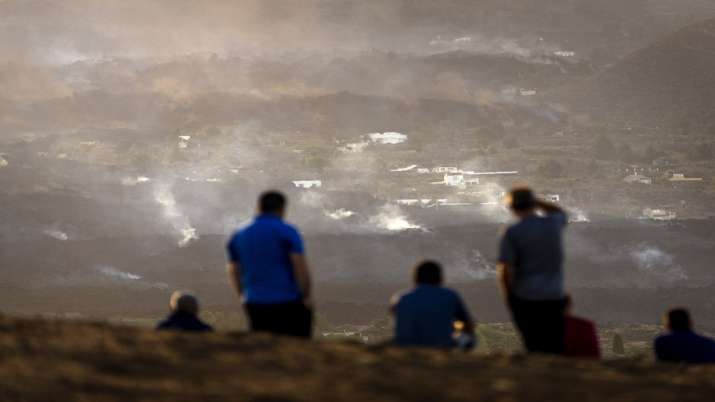
Residents watch from a hill as lava from a volcanic eruption flows on the island of La Palma in the Canaries, Spain.
Eruptions and lava continued on Friday, five days after a volcano in Spain’s Canary Islands erupted, officials said.
The loud blasts left the locals restless and sent shock waves echoing across the hills. The eruptions around the mouth of the volcano threw molten rock and ash into a wide expanse. Emergency services were withdrawn from the area as a precaution.
Regional airline Binter temporarily halted flights due to a huge ash cloud. The European Union’s monitoring program says about 400 buildings have been destroyed on La Palma, including many homes for 85,000 people on the western side of the island of La Palma.
It said the lava spread over 180 hectares (about 20,000 square feet) and blocked 14 kilometers (9 miles) of roads. The islanders mostly make a living from farming and tourism, and some may lose their livelihood.
The government of La Palma island said authorities had recorded 1,130 earthquakes in the area over the past week as the Cumbre Vieja volcanic ridge rocked with eruptions of lava.
On a visit to La Palma, Spanish Prime Minister Pedro Sánchez announced a package of measures to help the island get back on its feet and “rebuild life”.
Sanchez said the Spanish government would provide assistance to rebuild homes and public infrastructure, such as roads, irrigation networks and schools, as well as restart the island’s tourism industry. He did not specify how much money would be made available, but said more details would be available at a cabinet meeting next week.
The Guardia Civil Police Force said in a tweet that ash was spreading up to 4,500 meters (about 15,000 feet) in the air from the blasts. Local officials advised people to protect themselves from the ashes with face masks.
The two rivers of lava slowly drifted down the hill, with experts doubting whether they would be able to cover the remaining 2 kilometers (1.25 mi) to the sea because of their slow progress.
Guardia Civil said that one of the molten rocks has almost stopped and the other is moving at 4 to 5 meters per hour.
Both are at least 10 meters (33 ft) high on their leading edge and are destroying homes, farmland and infrastructure in their path. Scientists say lava flows can last for weeks or even months.
Officials have not reported any casualties in the blast. Scientists were monitoring volcanic activity and warned of a possible eruption, prompting the timely evacuation of about 7,000 people.
Read also | Spain: Volcano erupts on Atlantic island; Lava threatens some homes
.